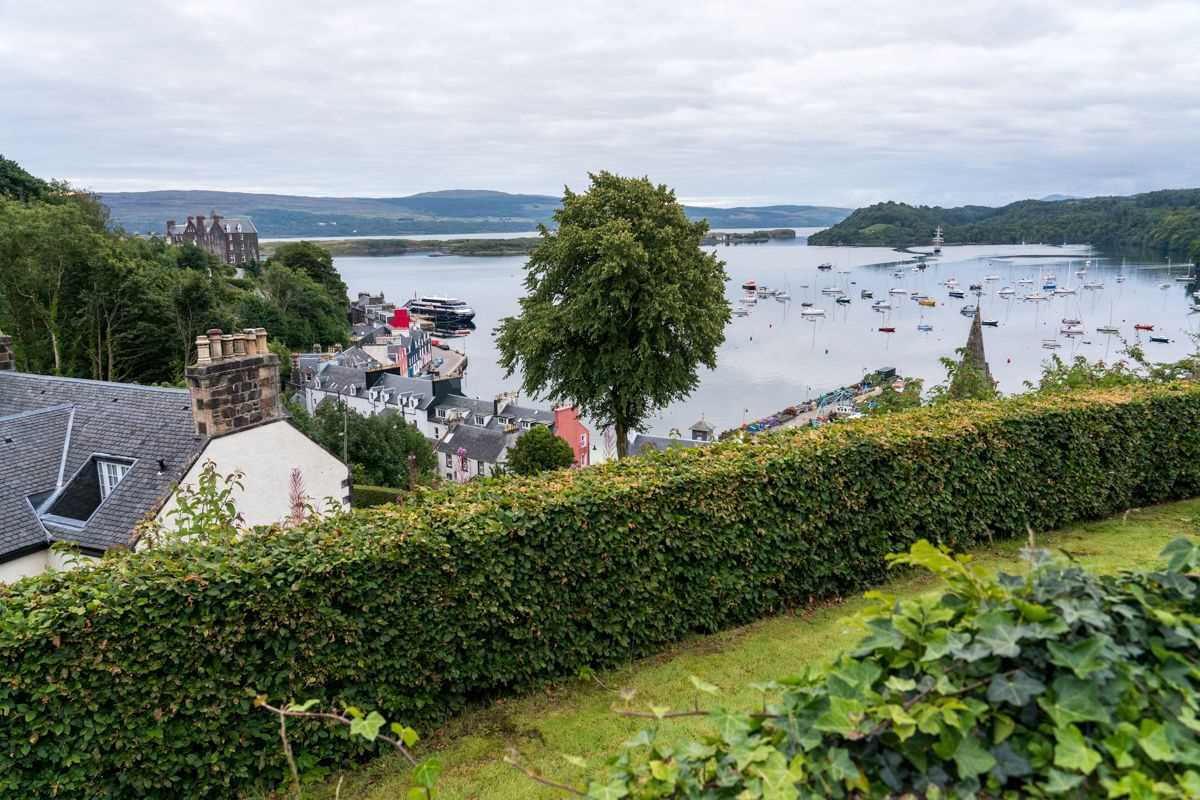Tobermory is the principal settlement on the Isle of Mull. Created as a fishing village to provide employment at the time of the Highland Clearances, it is now a noted yachting harbor, a celebrated safe anchorage in the Inner Hebrides. The name Tobermory comes from the Gaelic for Mary’s Well—a feature that can still be found at one end of the bay, beside the whiskey distillery. There is a variety of good shops in town—a bookshop that also sells fishing tackle, an artisan bakery, and a chocolate maker. There is an aquarium, a small museum, and several hostelries, including The Mishnish which was conveniently situated near our berthing. The town has an upper level that is largely residential except for An Tobar, a small yet lively arts center, and the Western Isles hotel, which served as an operational center for transatlantic convoys during the Second World War.
We spent the morning exploring the lower town and then took a walk along a recently restored path leading to one of the Stevenson lighthouses. The lighthouse was built by the father and uncle of Robert Louis Stevenson, the writer whose novel, Kidnapped, is loosely based on the island’s geography.
During lunch, we sailed to the Isle of Eigg, the most populous of the Small Isles with more than 100 inhabitants. At the turn of the 19th century, some 500 souls lived on the island. Eigg has always been regarded as the parent island of a group that includes Canna, Rum, and Muck. A decade ago, the island achieved celebrity status when the community bought the island from its landlord by way of a well-publicized fundraising campaign. Upon our arrival at Eigg, some of us went on a rather strenuous hike in the direction of An Sgùrr, a massive column of pitchstone. Other took a gentler walk along the shoreline and on the way, learned about the region’s history and botany.
Before dinner, we crossed over the Sound of Sleat to berth at Inverie, a small, mainland fishing community in Loch Nevis that is not connected by road to any other part of Scotland. During our crossing, we saw a minke whale swimming with harbor porpoises. We recognized many seabirds, including abundant Manx shearwaters, gannets, guillemots, and an occasional cormorant. The purpose of our visit to Inverie—in addition to finding a sheltered berth for the night—was to visit Britain’s most isolated public house, The Old Forge. There, we settled in with cask ales and good company—and then bought the inevitable T-shirts.









